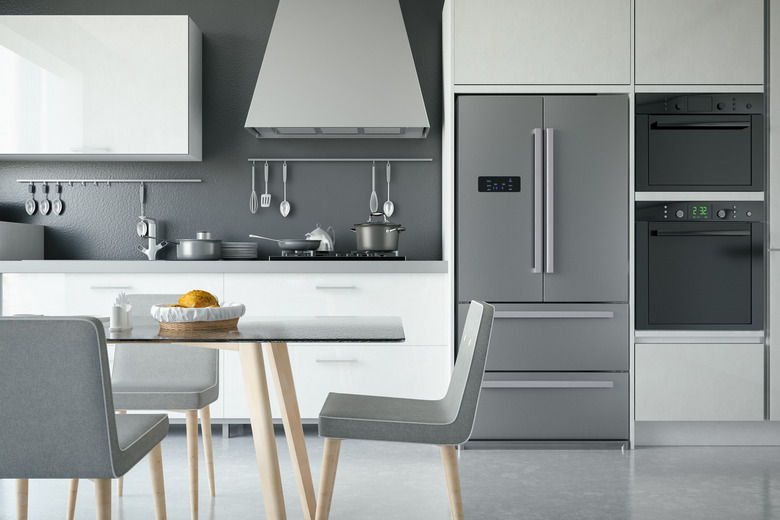How Much Air Circulation Does A Normal Refrigerator Need?
Setting up a refrigerator is generally pretty simple, provided it fits where it's supposed to go. But "fitting" and working are two different things because, for a fridge, air circulation is critical for proper function. If it's too snug in its new home, you could be stuck with a fridge that's not doing its job. So, how much air circulation does a fridge really need?
Tip
Usually, an inch or two all around the unit is all you'll need, but it depends on the fridge's make and model.
Understanding Fridge Air Flow
Understanding
Fridge Air Flow
Depending on the model and make of the refrigerator, it will have air vents in a few spots. There's always a grill or toe kick at the bottom and vents in the back of the unit — often in more than one spot. Depending on how old your unit is, you may have rear refrigerator coils or the cooling coils may be on the bottom of the unit. This changes how the appliance functions.
Air is pulled in and pushed out of the fridge in various ways. A big player in the success of how air moves into and exits your fridge and freezer is the evaporator fan in the freezer. When this isn't working correctly, it can cause buildup and frost on the evaporator coils. When that happens, air can't move through the coils properly and cold air won't be circulated throughout the appliance.
Similarly, the condenser coils at the bottom of the fridge need to be clean and free of debris or air will stop circulating. Dust buildup in the toe kick or grill can inhibit air flowing in, and this will stop the air circulation and the fridge will fail to reach or maintain the ideal temperature. If your fridge compressor is running but not cooling, odds are good that air flow is being compromised through lack of space, poor placement of goods within the fridge or dirt and debris are mucking up the works.
So, How Much Space?
So, How
Much Space?
If you've got an older fridge with coils on the back of the unit, it's wise to leave as much as 3 inches space between the wall and the unit. For newer units, 1 to 2 inches at the back can suffice, but your user manual should specify for your model. If you don't have the user manual, you can often do a quick web search to turn up the manufacturer's PDF online.
On the sides and top, a half-inch to 1 inch of space from the nearest wall or cupboard should suffice, but erring on the side of an inch will do you good. By having adequate space all around your refrigerator, you'll prolong its life and get the best performance.
Cleanliness Counts, Too
Cleanliness Counts, Too
The toe kick at the front of the fridge is one spot to always pay attention to when cleaning your floors and house. Folks with hairy pets or hard floors or both will experience dust bunnies getting sucked onto the grill or toe kick. As these offending dust bunnies and hair clumps build up, air flow slows and slows, causing your fridge to work harder to maintain temperatures until it simply fails. To avoid this, just run a vacuum nozzle over it as you do your housework and you'll minimize the chances of your fridge misbehaving.
With free-flowing vents and good air circulation, you're more likely to have a frost-free freezer too. If you choose to pull your fridge out to vacuum the back as well, be sure you unplug it before you get cracking.
